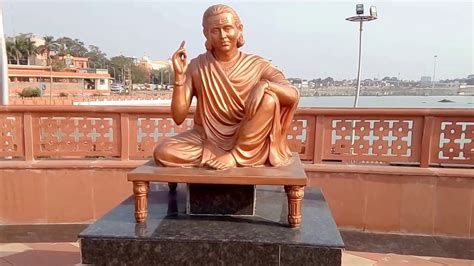The First Navaratnas
Apr 14, 2019 • 2237 views
The concept of Navaratnas is not exclusive to a single ruler in India. This has been used successfully by a number of Indian rulers and more than often, the Navaratnas acted as the Cabinet of Ministers, as we have in the Parliamentary System of Government.
The Gupta Emperor, Chandragupta Vikramaditya was the first one to introduce the concept of Navaratnas or Nine Gems, all of whom were experts in their respective fields. The Navaratnas of Chandragupta Vikramaditya are described with this shloka of Sanskrit:
धन्वन्तरिः क्षपणकाऽमरसिंह शङ्कुः
वेताळभट्टः घटकर्परः काळिदासः।
ख्यातो वराहमिहिरो नृपते सभायाम्
रत्नानि वै वररुचिर्नव विक्रमस्य।।
The above shloka translates as:
Dhanvantari, Kshapanaka, Amarsingh, Shanku, Vetalabhatta, Ghatakarpara, Kalidasa, Varahamihira and Vararuchi are the famed Nine Gems of King Vikrama’s court.
Dhanvantari
He was a man who was a fantastic surgeon. He was also a learned man of Ayurveda and his behaviour was similar to the God of Surgery, Dhanvantari. He established a medical learning centre in Kashi, which is associated with Sushruta.
Kshapanaka
Kshapanaka was a poet and a literature expert in the Royal Court of Chandragupta Vikramaditya. His best known work is Dvatrishatika, which is one of the finest Sanskrit works.
Shanku
Shanku remains the anonymous gem of Chandragupta Vikramaditya's court. The reason being his absence from the written works of many people of that era. We only know that he was a man related to geography and nothing else.
Amarsingh
Another man from literature, Amarsingh was the author of Amarakosha—a treatise on Sanskrit grammar. He has presented the origins of the Sanskrit grammar in three books, collectively known as Trikhanda.
Vetala Bhatta
Vetala Bhatta is probably the only person who an average Indian would have heard of apart from Kalidasa. However, he is highly underrated and is known only for his half dead spirit in the stories of Vikram and Vetal. Vetala Bhatta was the author of Neeti Pradeepam, a book on conduct. He was a dear friend of Vikramaditya who died mysteriously, but returned in the form of spirit to reveal the qualities of a king, according to Singhasan Dvatrimsika.
Ghatakarpara
Like most of his colleagues, most of the information about him has been lost, except his literary works of Ghatakarparakavya of 22 verses and Yamaka Kavyam. He was also a poet in the Royal Court.

Kalidasa
Kalidasa is the only man who is known to common folks, for he is regarded as the Shakespeare of India although he lived centuries ago Shakespeare. Popularly known as the Mahakavi, his works are regarded as the finest works of Modern Sanskrit Literature. His dramatic works include Abhigyan Shakuntalam, Vikramorvasiyam and Malavikagnimitram. He has also written a poem depicting the lineage of Lord Ram in Raghuvansham and an another poem called Kumarasambhavam, which discusses the marriage of Lord Shiva. His work on behaviour of lovers in six different seasons is depicted in Ritusangharam, while Meghdootam remains his Magnum Opus till date.
Vararuchi
Vararuchi is widely known in Kerala as the father of 12 legends. He was a grammar enthusiast and has produced works in Sanskrit language. However, his works have been found in the Prakrit language as well, which was the lingua franca of the people.

Varahamihira
This man was one of the greatest ancient Indian mathematicians, and is known for his book Pancha Siddhantika. He was the one who gave the concept of what is known as the Pascal's Triangle even before Pascal was born. He was a renowned astrologer as well and has written a book called Brihat Samhita. His contribution in the field of ancient education of India are exceptional, and formed the base of studies of Aryabhatta.
The discussion on the other gems of another Royal Court shall be taken in a future post.
